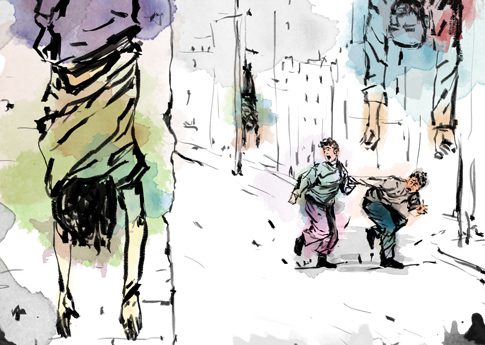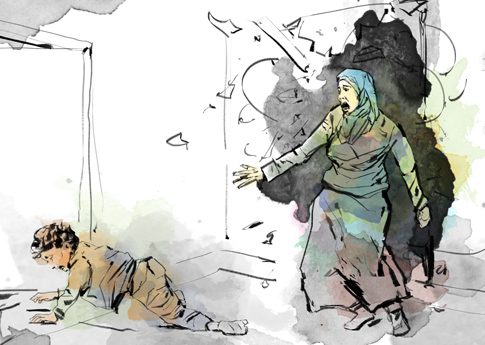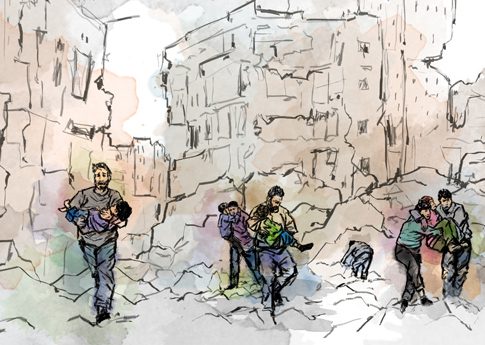The battle for west Mosul has caused a civilian catastrophe
Civilians in west Mosul have been ruthlessly exploited by the armed group calling itself the Islamic State (IS), which has systematically moved them into zones of conflict, used them as human shields, and prevented them from escaping to safety. They have also been subjected to relentless unlawful attacks by Iraqi government forces and members of the US-led coalition (hereon referred to as pro-government forces). In March and May 2017, Amnesty International researchers visited northern Iraq to document violations of international humanitarian law and human rights abuses by all sides of the conflict in west Mosul. The findings were published today in a new report: “At Any Cost: The Civilian Catastrophe in West Mosul, Iraq.”
The cheapest thing in Iraq is a human being
Hashem, west Mosul resident
The Civilian Catastrophe

Islamic State War Crimes: “Nobody Will Escape Alive”
During the battle for west Mosul, IS committed serious human rights abuses, some of which constitute war crimes. They rounded up thousands of civilians and forced them to move directly into the zone of combat. Deliberately using civilians as human shields, IS fighters trapped civilians in their homes by welding their doors shut, rigging booby traps at exits, or summarily killing those who attempted to escape. They also regularly denied civilians medical care and confiscated their food.
[IS] told us that if we tried to run away, they would break our legs. They said, 'Nobody will escape alive.'
'Abeer,' a 20-year-old woman from al-Msherfa, west Mosul
IS summarily killed hundreds, if not thousands, of men, women, and children as they attempted to flee and hanged their bodies in public areas.
Mosul residents told Amnesty International that their only option to escape was directly through the front lines of the battle, as soon as the fighting reached their neighbourhood or street. They described desperate flights from their homes to pro-government forces’ positions, waving white flags or pieces of fabric yelling “civilians” or “families.”
Iraqi forces had told us to stay in our houses and hang children’s clothes on the roof of our home so that they knew it was a family home, not an IS home. The children’s clothes were on the roof when the rocket landed on my house.
Yazen, al-Tenak resident


Iraqi Government & US-Led Coalition: Serious Failure to Protect Civilians
IS tactics and violations created particular challenges for pro-government forces in terms of civilian protection in west Mosul. Iraqi government and US-led coalition forces failed to adequately adapt their tactics to these challenges – as required by international humanitarian law – with disastrous consequences for civilians. Starting in January 2017, pro-government forces carried out a series of unlawful attacks in west Mosul, relying heavily on explosive weapons with wide area effects such as IRAMs (Improvised Rocket Assisted Munitions). With their crude targeting abilities, these weapons wreaked havoc in densely-populated west Mosul and took the lives of thousands of civilians. Amnesty International investigated 45 pro-government attacks and found that these alone killed at least 426 civilians. The true death toll of the west Mosul battle may never be known.
Pro-government forces also failed to take effective precautions to protect civilians when planning and executing attacks. They did air-drop leaflets into IS-controlled areas of the city, instructing civilians to stay away from IS or to hang children’s clothes on the roof to mark civilian homes. These warnings, however, took little account of the realities of living under IS. Staying away from IS was impossible for west Mosul residents and fighters would execute anyone caught with a flyer in their hands. Houses with children’s clothes on the roof were still hit by air strikes.
The strikes targeted the IS snipers. A strike would destroy an entire house of two storeys. They’d hit one house and also destroy the two houses on either side. They killed a huge number of people.
Mohamed from al-Tenak neighbourhood, west Mosul
Health professionals have noted that patients from west Mosul often had blast-related injuries, a phenomenon associated with the use of powerful explosive weapons in civilian areas. It is inconceivable that pro-government forces were unaware of IS tactics, the concentration of civilians in areas coming under attack, or the terrible cost to civilian life of using explosive weapons with wide-area effects in these areas.

Don’t Let These Crimes Be Buried
Iraqi forces and members of the US-led coalition must ensure that the fight against IS – not only the fight for Mosul, but in other battles in Iraq and in Syria – is fought in a way consistent with international law and standards. Civilians trapped by conflict and abused by IS must be treated with the dignity and humanity they deserve. Amnesty International calls on the Iraqi government and members of the US-led coalition to:
- Publicly acknowledge the scale and gravity of the loss of civilian lives during the Mosul battle and highlight the need for reparation to victims and families of victims of violations;
- Immediately cease the use of inherently indiscriminate weapons and explosive weapons with wide area effects in the vicinity of populated civilian areas;
- Given the current desperate situation and large number of internally displaced people from Mosul and its surroundings, urgently increase funding for humanitarian assistance to civilians who have fled the fighting in Mosul.
Read the full recommendations in the report here.

